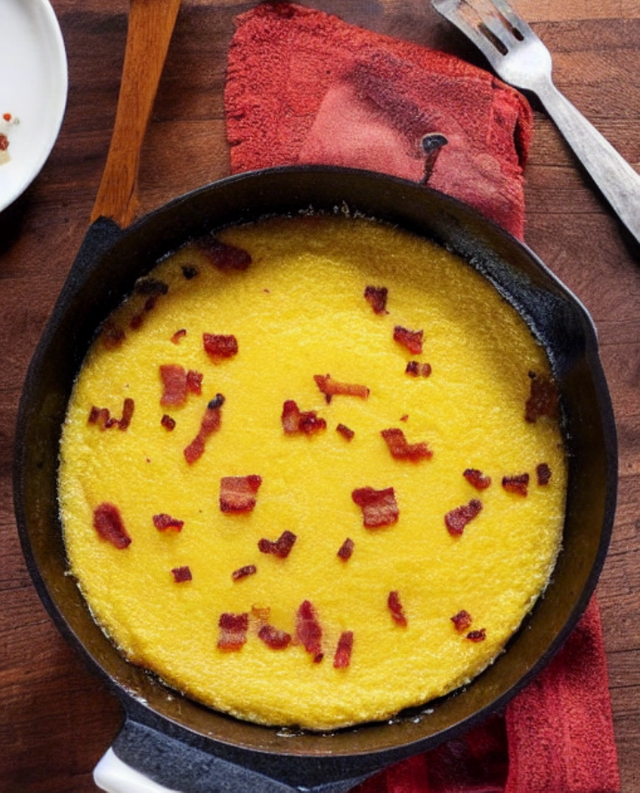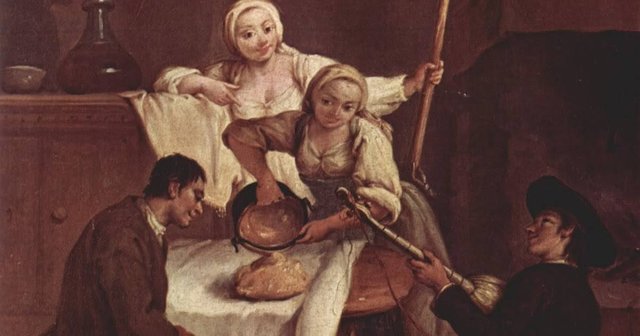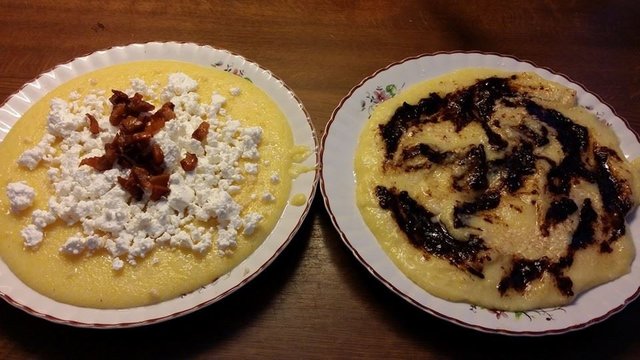Polenta or cornmeal boiled into a porridge
Okay, I admit that we cannot 100% assume that this dish is Hungarian, this will become clear from my historical guide. But as we know, my country has very close historical roots to Transylvania.

🤔 ℹ️ It can be a main course or a dessert, it all depends on whether you make the salty or the sweet version.
Hi my potential friends. I'm @gastrocrutch from Budapest,

📜 So a bit of backgroud history of puliska, polenta or whatever call it 😉
Puliska (mămăligă in Romanian, Palukes in Transylvanian Saxon) is a porridge made from corn flour. The name of the dish appeared in the Hungarian language at the end of the 17th century, its origin is unclear. It may come from the Latin words pollis (fine flour) or puls (thick pulp, porridge) and may have entered the colloquial language from student language. It was originally made from buckwheat; as a dish cooked from corn flour, it first appeared in 1708, in the dictionary of Ferenc Pápai Páriz. In my homeland, it is also known as corn gánica, corn málé, ganca, its harder fried version is gorhe, and more recently polenta - the latter name is of Italian origin, which was also adopted by the English language, among others.

This photo ⬆️ above is a historical moment. A “Poor Man’s Dish” in Northern Italy. So yeah, you can see, puliska or polenta are everywhere.
It can be found in Hungarian, Romanian, Transylvanian Saxon, Slovenian, Bulgarian and Ukrainian traditional meals; it used to be the main food of the poor people of Transylvania. It was the main dish at breakfast and dinner, and it was eaten as a side dish at lunch. The hard version was packed cold in a bag, for traveling, field and forest work.
Light, low-calorie food; according to a Transylvanian Saxon saying, "he who eats it for dinner should tiptoe to bed, so as not to starve on the way".
After being almost forgotten among the urban population during the 20th century, puliska is now becoming more and more well-known and popular again, which can primarily be linked to the spread of reform nutrition. In addition to the salty and vegetable versions, its fans also eat it as a sweet porridge, often made from cornmeal instead of cornmeal. It is also available as a side dish in many restaurants in Hungary, mainly under the name polenta, which is considered more attractive due to the Italian aspect. In addition, since, unlike wheat and rye, it does not contain gluten, it can also play an important role in the nutrition of people who are sensitive to flour. Its importance is also known in baby food - it can help prevent the development of celiac disease when used instead of grains containing gluten.
The food was also known to the South American Indians, they mixed wood ash with the corn soaked in water, so the hard shell of the corn kernel softened and the little niacin in the corn was released more easily, so they did not develop vitamin B3 deficiency, and the pellagra caused by it.
Materials of puliska
I will share with you the ingredients of the simplest puliska version.
Making of puliska
✅ For the puliska, pour the water into a pot, start heating it, and add the salt. When the water boils, gradually pour in the cornmeal. With frequent stirring, cook until ready in about 20-25 minutes.
✅ Pour the puliska into a bowl while it is still warm. It can be eaten sweet with jam, fruit, or salty with sheep's cheese and bacon.

Viewed from here, on the left side of the photo ⬆️ above, you can see the sheep's cheese and bacon version of the puliska, while on the right side, the jam version. Yummy ❤️
I think this food can meet the needs of both a child and an adult. It's a good choice if you want to have a meat-free day or if you don't have too much time to cook. 👋Cheers from the kitchen 😄